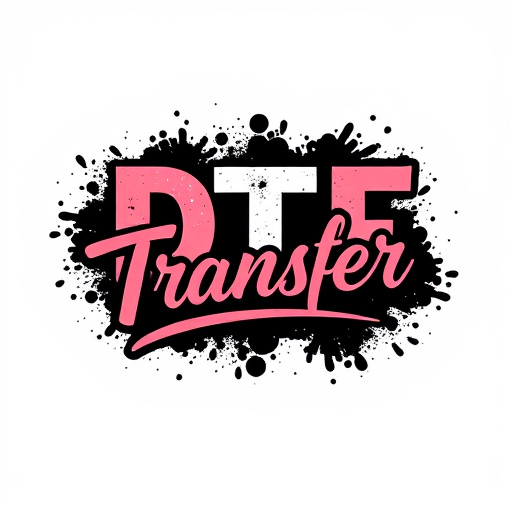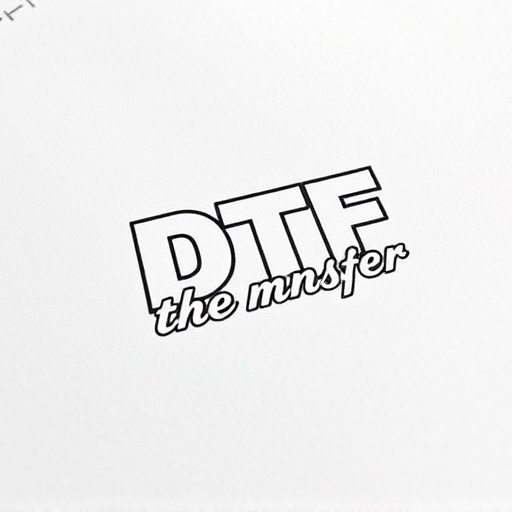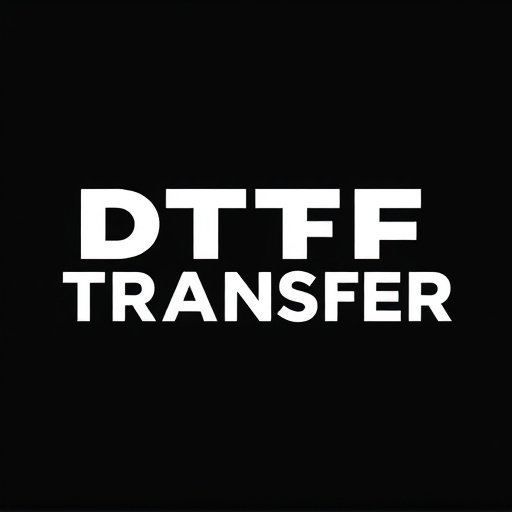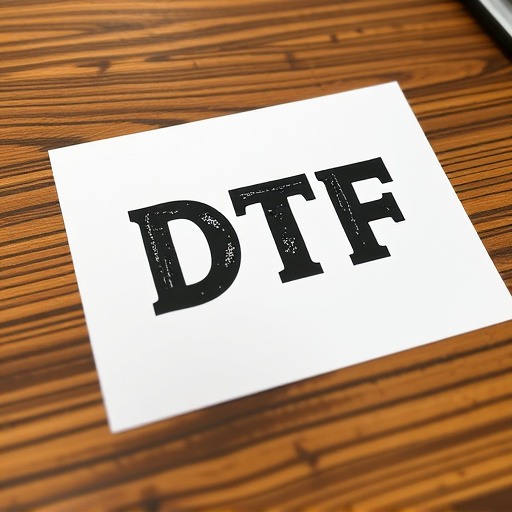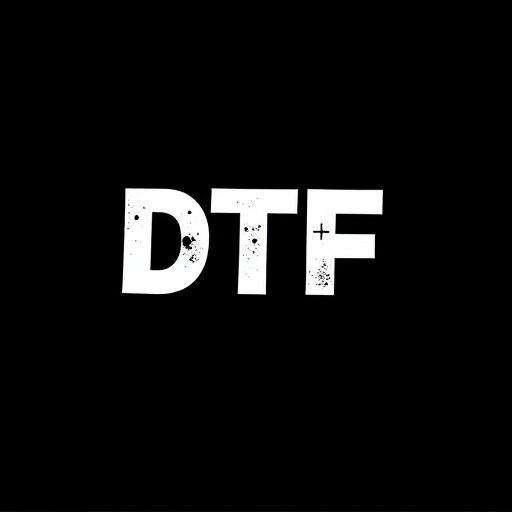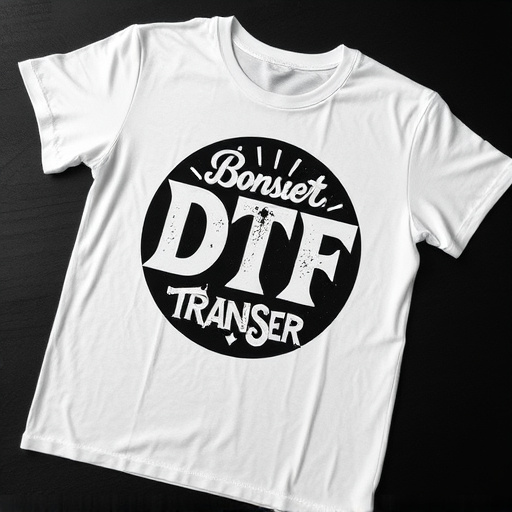Direct-to-Film (DTF) transfer technology is a revolutionary process in film printing and production, offering unparalleled efficiency, speed, and versatility. It directly applies digital images to various media with remarkable precision, eliminating intermediate steps and ensuring high-quality prints. DTF's advantages include reduced turnaround times, cost savings, and exceptional color accuracy, catering to diverse industries like textiles, signage, and packaging. Top companies invest in rigorous quality checks and cutting-edge technologies, producing durable and stunning DTF prints for custom art, fine art reproduction, and more. The future of DTF transfer production is marked by higher resolutions, automation, sustainability efforts, and personalized on-demand services.
“Direct-to-film (DTF) transfer production is transforming industries with its cutting-edge technology and versatile applications. This article explores the innovative world of DTF, shedding light on its benefits and the businesses leading the charge. From understanding the technology behind DTF printing to delving into its diverse uses, we uncover how this process enhances productivity and creativity. Get ready to discover the future of film transfer as we highlight top performers and unveil emerging trends shaping the DTF industry.”
- Understanding Direct-to-Film Transfer (DTF) Technology and Its Benefits
- Top Businesses Revolutionizing DTF Transfer Production
- The DTF Printing Process: From Design to Final Product
- Applications of DTF Prints in Various Industries
- Quality Control and Innovation in DTF Transfer Production
- Future Trends Shaping the DTF Industry
Understanding Direct-to-Film Transfer (DTF) Technology and Its Benefits
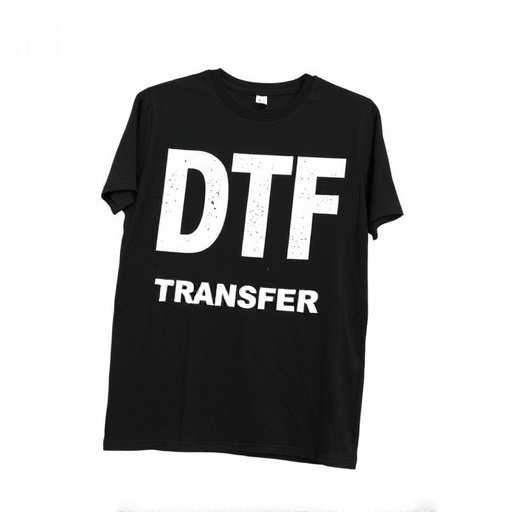
Direct-to-Film (DTF) transfer technology is a cutting-edge method that has revolutionized the way businesses approach film printing and production. This innovative process enables the direct application of digital images onto various media, including film, eliminating the need for traditional intermediate steps. With DTF Transfer, businesses can achieve high-quality prints with remarkable accuracy and precision, ensuring every detail is captured perfectly.
One of the key benefits of DTF Technology lies in its efficiency and speed. It streamlines the production process, reducing the time required for printing. This makes it an ideal solution for urgent film transfers or when dealing with large volumes of material. Additionally, DTF offers unparalleled versatility; it can be used on a diverse range of materials, from traditional photographic papers to specialized films, catering to various industry needs. The technology’s ability to produce sharp, detailed prints ensures that final products meet the highest standards, making DTF Printing a preferred choice for businesses seeking exceptional visual outcomes.
Top Businesses Revolutionizing DTF Transfer Production
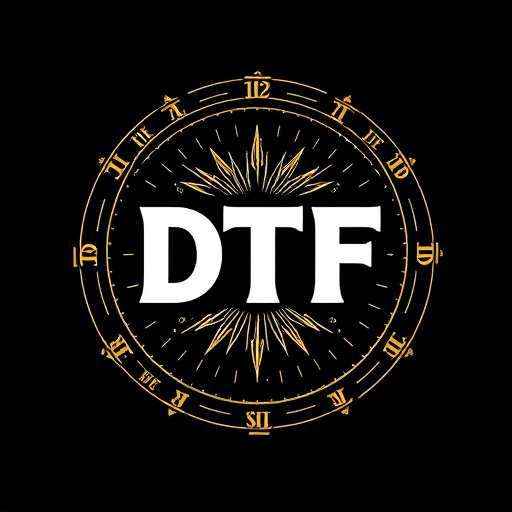
In today’s digital age, businesses specializing in Direct-to-Film (DTF) transfer production are revolutionizing the way we create and consume prints. These top players in the industry are pushing boundaries by offering cutting-edge DTF printing technologies that deliver exceptional quality and efficiency. By eliminating the need for traditional film positives, DTF transfer production allows for quicker turnaround times and more cost-effective solutions without compromising on detail or vibrancy.
Companies at the forefront of this innovation are mastering the art of translating digital designs onto various substrates with precision. Their advanced machines and specialized inks ensure that DTF prints not only look stunning but also offer durability and longevity. This evolution in DTF transfer production is transforming industries, from signage and packaging to promotional merchandise, providing businesses with a versatile and dynamic way to bring their creative visions to life.
The DTF Printing Process: From Design to Final Product
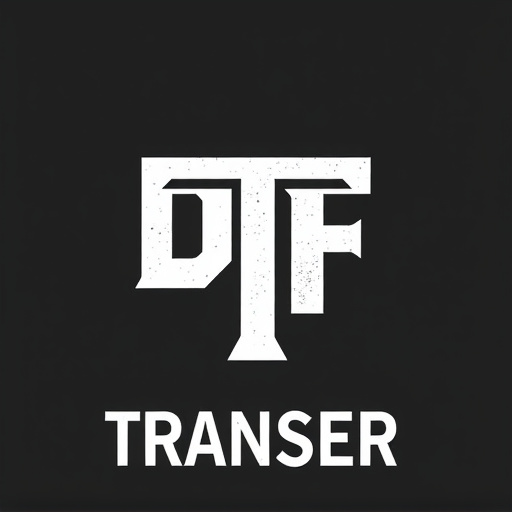
The Direct-to-Film (DTF) transfer process is a cutting-edge method revolutionizing the way businesses create and produce high-quality prints. It starts with a digital design, which is then precisely transferred onto a film substrate using advanced printing technology. This film serves as a master copy, ready to be used for various applications such as textile printing or signage. The key advantage lies in its versatility; designs can range from simple graphics to complex, detailed images, all achieved with exceptional precision and color accuracy.
As the process unfolds, the DTF-printed film undergoes careful preparation, ensuring it’s ready for the next stage. This may involve cutting, trimming, or adding specialized coatings to enhance durability and performance. The final product is a versatile, ready-to-use print, offering businesses an efficient and cost-effective solution for their design needs. Whether it’s for custom apparel, promotional items, or large-scale signage, DTF transfer production ensures consistent quality and allows for quick turnaround times, catering to the fast-paced demands of modern businesses.
Applications of DTF Prints in Various Industries
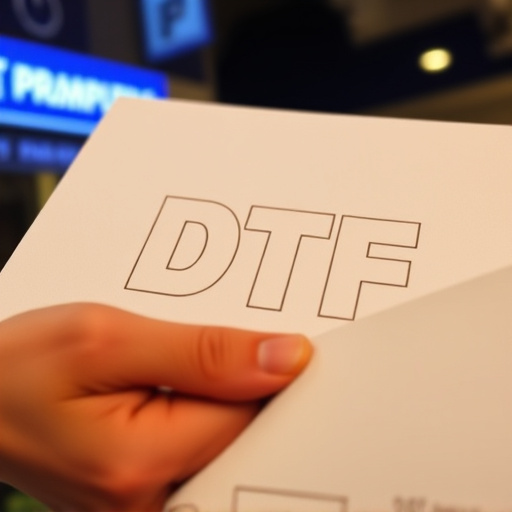
Direct-to-film (DTF) transfer production has revolutionized various industries with its versatile applications. DTF prints are used extensively in textiles, offering unique designs and patterns that enhance clothing and accessory lines. The fast turnaround time and ability to print on diverse fabrics make it an attractive option for fashion designers and manufacturers.
Moreover, DTF technology finds its footprint in signage and advertising. Large-format printers can produce high-quality graphics and visuals directly onto film, which is then transferred to various surfaces like vinyl banners, posters, or even walls. This method ensures vibrant colors and sharp details, making it ideal for businesses seeking eye-catching promotional materials. Additionally, DTF Printing plays a significant role in packaging, enabling brands to create custom, on-demand packaging solutions that capture consumers’ attention and drive sales.
Quality Control and Innovation in DTF Transfer Production
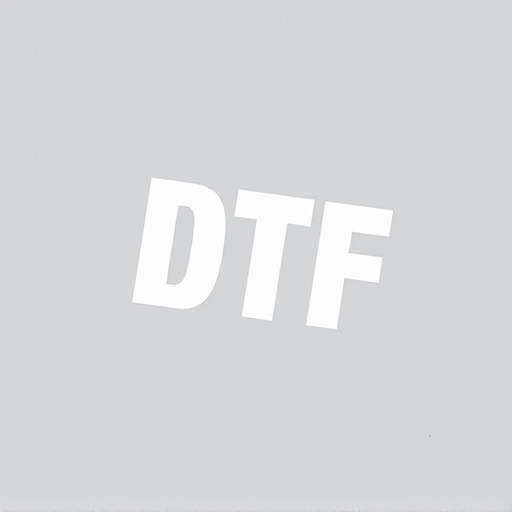
In the realm of direct-to-film (DTF) transfer production, quality control and innovation go hand in hand. Top businesses specializing in DTF transfer production invest heavily in meticulous quality checks at every stage of the process, ensuring that each DTF print meets the highest standards of clarity, color accuracy, and durability. This commitment to quality is driven by the demand for exceptional results in various applications, from custom art prints to fine art reproduction and archival collections.
Innovation in DTF transfer production involves continuous exploration and adoption of cutting-edge technologies. These advancements range from sophisticated printing techniques that enhance detail and texture to novel materials that offer superior longevity and resistance to fading. By staying at the forefront of these innovations, leading DTF businesses not only maintain but also elevate the art and craftsmanship behind their prints, ensuring they stand as a testament to the fusion of traditional artistry and modern technology.
Future Trends Shaping the DTF Industry
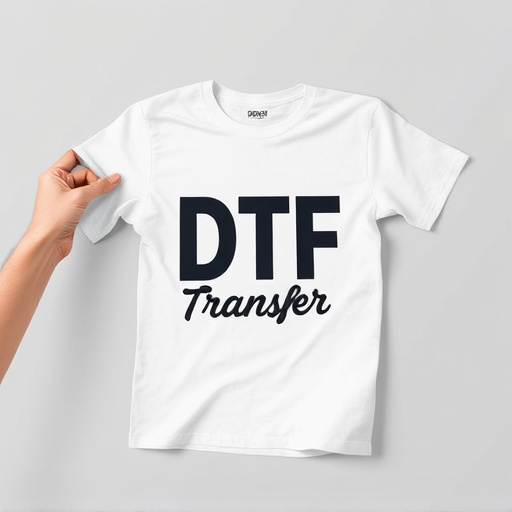
The future of direct-to-film (DTF) transfer production is brimming with exciting possibilities and innovative trends that are set to reshape the industry. One prominent trend is the increasing demand for DTF printing technologies that offer higher resolution and improved color accuracy, enabling the creation of more vibrant and detailed prints. This advancement is particularly beneficial for businesses aiming to capture intricate designs and realistic images on various materials. Additionally, the integration of cutting-edge software and automation in DTF production processes is streamlining operations, enhancing efficiency, and reducing turnaround times.
Another notable trend focuses on sustainability and eco-friendly practices within the DTF industry. There is a growing emphasis on developing environmentally conscious DTF transfer methods, utilizing recycled materials, and minimizing waste. Businesses are exploring alternative printing techniques that reduce the environmental impact of production while still delivering high-quality results. Furthermore, the rise of customized and on-demand DTF printing services is allowing businesses to offer personalized products, catering to individual customer preferences and demands in this dynamic market.






